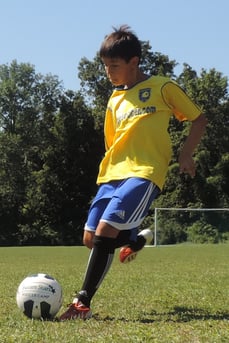 Several factors should be considered by parents before placing youth athletes into more competitive play.
Several factors should be considered by parents before placing youth athletes into more competitive play.
Parents of children exemplifying an early mastery in sport know it will only be a matter of time before they face the oh-so-popular buzzwords of today’s youth athletics. Words such as ‘Select,’ ‘Club,’ or ‘Premiere’ roll off the tongues of Moms and Dads in the stands. “Susie is a natural at volleyball. Why don’t you find her a Club team?” asks another parent. “Wow! Johnny sure does throw hard for his age,” a Dad starts the conversation with the father of the eight-year-old on the mound. “He’s wasting his time here. You need to get him on a Select team!”
There is never an easy answer to the question of whether recreational or select level should be the path chosen for participants in youth athletics. Parents will find this question will beget more questions, and that is okay. What age is most appropriate to play in a more competitive atmosphere? What kind of time commitment must be made? Is specializing in a single sport best for the child? More questions are sure to come before a decision is finally made.
The starting point for any parent begins with a self-evaluation of their child. Is my child actually advanced enough to compete fairly in a ‘select’ atmosphere? If the answer is yes, does my child actually want to do this? Part of a child’s athletic performance may be due to his/her being comfortable playing with school friends that are on the team. Pulling a kid out of the comfort zone may not be the best choice, particularly at younger ages. What is wrong with a child excelling in a recreational sport for a few years? It may make sense to hold off on moving a child to more competitive play until the level of athleticism is matched by the child’s mental abilities. A child becoming bored with the recreational surroundings may desire to accept the challenges related to select competition.
While not always the case, many young athletes excel in more than one sport. Some select sports are more demanding than others. Baseball or softball used to be primarily summer sports, but with the growth of specialization, there are now leagues in the fall and spring. Then there are individual lessons in pitching, catching, and hitting which may be at an indoor facility in the winter. Select basketball, soccer, and volleyball are year-round now. The National Athletic Trainers Association has issued concerns of muscle overuse in various sports, and rightfully so. Parents should never let a child – especially before high school age – participate in more than one team per sport in any given time period. Multiple sport athletes get a chance to rest sport-specific muscle groups when one season ends and another begins.
The high cost of a college education also brings the latest reason for children to participate in the most competitive sports atmosphere. Club and select coaches will tell parents that scholarships are more likely offered to those playing amongst the greater competition. There is some truth to this, but parents must recognize club and select coaches may need to fill their rosters in order to collect enough fees to properly operate a sports program. Do diligent research before making a monetary commitment.
There is no right answer to this question. Parents must continually ask the questions and keep their child’s overall development and best interest at the forefront. It can be helpful to find a coach that you trust who does not have a vested interest and knows your child and family.










.png)
.png)
.png)
.png)